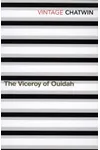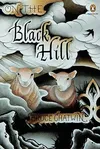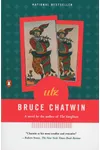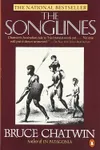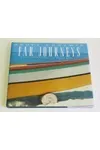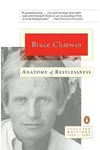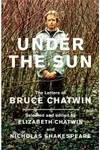Picture an English wanderer spinning tales that blur fact and fantasy, whisking readers to the wilds of Patagonia and beyond—meet Bruce Chatwin! Known for revolutionizing travel writing with his 1977 debut In Patagonia, Chatwin crafted stories that danced between adventure, history, and human curiosity. His lyrical prose and nomadic spirit continue to captivate, making him a literary icon despite his early death in 1989.
Chatwin’s life was as colorful as his books. From art expert to globe-trotting storyteller, he lived with a restless energy that fueled his unique narratives. Let’s explore the man behind the myth and why his work still sparks wanderlust.
The Making of Bruce Chatwin
Born on May 13, 1940, in Sheffield, England, Charles Bruce Chatwin grew up in a middle-class family with a knack for storytelling. His early fascination with travel was sparked by a piece of mylodon skin at his grandparents’ home, hinting at Patagonia’s mysteries. After boarding school at Marlborough, he joined Sotheby’s at 18, rising to a director of Impressionist art with his sharp eye for detail. But the auction house couldn’t contain his wanderlust. In 1966, he ditched Sotheby’s to study archaeology at Edinburgh University, only to bolt again, this time to write for The Sunday Times. A 1972 interview with designer Eileen Gray, who pointed to a map of Patagonia, reignited his childhood obsession, leading to his fateful 1974 journey.
Bruce Chatwin’s Unforgettable Stories
Chatwin’s debut, In Patagonia (1977), redefined travel writing with its vivid snapshots of people and places, blending fact with embellished tales. Critics hailed its spare, poetic prose, earning it the Hawthornden Prize and E.M. Forster Award. The book follows Chatwin’s trek through Argentina and Chile, chasing myths like Butch Cassidy’s cabin, though locals later disputed some accounts as fictionalized.
His 1980 novel The Viceroy of Ouidah weaves a fictionalized biography of a Brazilian slave trader in 19th-century Dahomey, showcasing Chatwin’s knack for lush, historical storytelling. On the Black Hill (1982), a departure set on a Welsh farm, explores twin brothers’ lives with tender intimacy, winning the Whitbread First Novel Award. His most ambitious work, The Songlines (1987), blends travelogue, memoir, and philosophy to probe Aboriginal Australian songlines and human restlessness. Its experimental shift to a commonplace book format divided critics but cemented Chatwin’s boundary-pushing style.
Chatwin’s writing—described as “literary Cartier-Bresson” for its quick, evocative sketches—drew from influences like Hemingway’s spare prose and Robert Byron’s travel notes. He called his works “stories” or “searches,” not novels or travelogues, reflecting his quest for big questions about existence and connection.
Why Bruce Chatwin Matters
Chatwin’s impact lies in his defiance of genre. His uncategorizable work inspired writers like Claudio Magris and William Dalrymple to break free from conventional boundaries. By blending fact and fiction, he invited readers to question truth and embrace the art of storytelling. His friend Robyn Davidson noted he “posed questions we all want answered,” giving the illusion of answers through his tales. Despite controversies over accuracy, his books remain in print, enchanting new generations with their vivid prose and nomadic spirit.
Chatwin’s life, cut short by AIDS in 1989 at age 48, mirrored his stories—restless, contradictory, and magnetic. His legacy endures in the wanderlust he ignites and the literary trails he blazed.
- About Bruce Chatwin
- Born: May 13, 1940, Sheffield, England
- Key Works: In Patagonia, The Songlines, On the Black Hill, The Viceroy of Ouidah
- Awards: Hawthornden Prize, E.M. Forster Award, Whitbread First Novel Award
- Died: January 18, 1989, Nice, France
Snag In Patagonia or The Songlines and dive into Bruce Chatwin’s spellbinding world of adventure and wonder!
